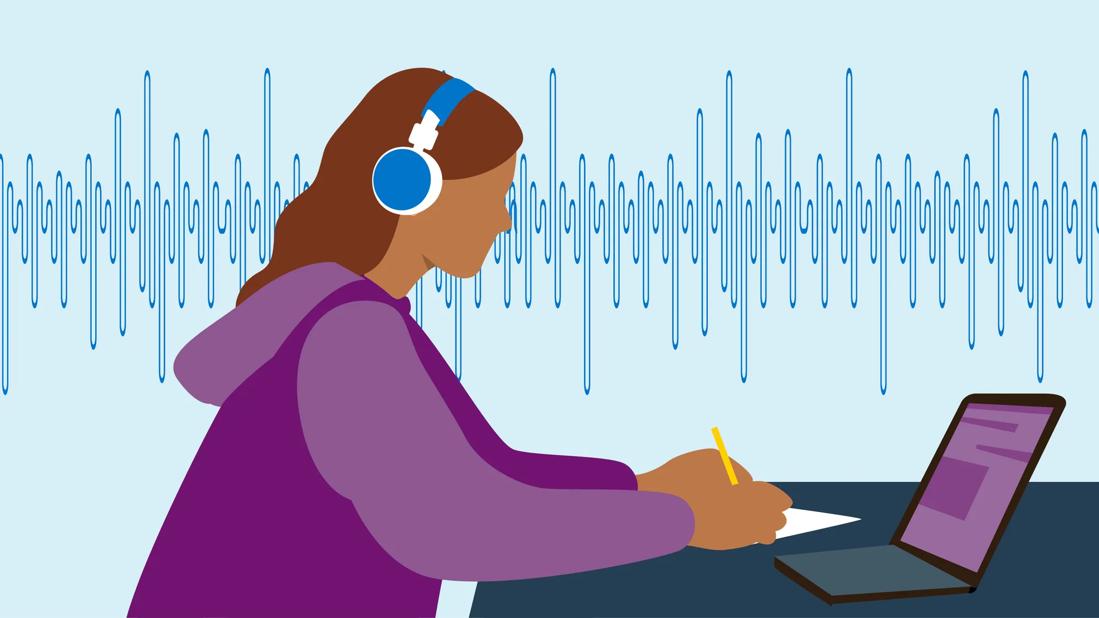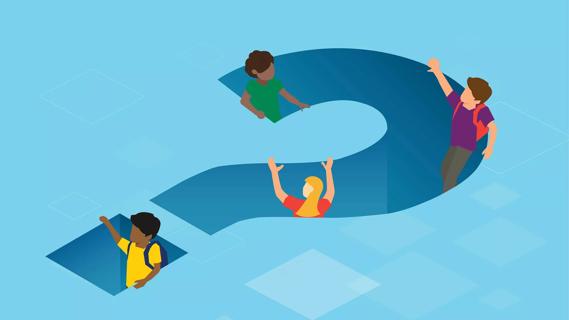Background stimulation and intentional fidgeting may actually help you stay on task

Let’s face it: Daily tasks and work assignments can be boring. And if you’re living with attention-deficit/hyperactivity disorder (ADHD), staying focused on a less-than-stimulating task can be incredibly challenging.
Advertisement
Cleveland Clinic is a non-profit academic medical center. Advertising on our site helps support our mission. We do not endorse non-Cleveland Clinic products or services. Policy
But there are things you can do to set yourself up for success and improve your attention span. As some tips and tricks may work better for you than others, you’ll want to experiment to find what strategies are best for you.
“ADHD very rarely presents the same way in every person,” says behavioral health provider Jeffrey James, CNP. “There’s no exact science to it. The goal is to identify realistic and effective tools that help you get and stay focused.”
Your environment is critical for concentration, whether you have ADHD or not. But even in an ideal environment, ADHD can make it challenging to stay focused, especially if you work from home.
“When we talk about ADHD, it’s not necessarily a deficit in attention,” James clarifies, “but a deficit in regulating that attention.”
James shares ways to set yourself up for success and tips for regulating your attention.
Our brains work more effectively at certain times of day and in certain circumstances, depending on factors like:
Advertisement
“Everyone’s brain and circumstances are different,” James notes. “Figure out what time of day your brain works most effectively. That’s when you should work on tasks requiring focus and attention to detail.”
Technology is extremely distracting, and not just for the ADHD brain.
“The brain is primitive,” James says. “We weren’t meant to have so much information thrown at us at such a rapid rate and all at the same time.”
James adds that notifications from your phone and email can be very distracting. They’re likely to disrupt your workflow and make it easy to procrastinate. When you need to focus, keep your phone in another room or put it on silent or “do not disturb” mode.
He recommends keeping your workspace clear of distracting items as well. A desk with drawers works well for hiding items you may need, so they’re only available when you absolutely need them.
Once you’ve removed unnecessary distractions, you may find it helpful to add a low level of stimulation. Your brain will search for stimulation, but when you control the type and level of stimulation it gets, you can maintain focus.
“An understimulating environment can make it just as hard to focus as an overstimulating one,” James shares.
The right music or low-frequency sounds can boost dopamine levels without stealing your attention. But it may take some trial and error to find the music or sound that works for you.
“Look for playlists made for focusing and ADHD,” he suggests. “They often include video game music, which is repetitive and offers the same sequence over and over, so there’s no nuance or surprise. It provides a level of stimulation for the brain without being distracting.”
It can be easy to lose track of time when you have ADHD. So, it can be helpful to have a visual aid of time passing, such as:
“Time management can be difficult for people with ADHD,” James reinforces. “Their brains perceive time passing differently from the neurotypical brain. A visual reminder of time passing can help you stay on track.”
An enjoyable task can boost dopamine and keep you focused. So, turning a boring task into something more fun may hold your attention better. It can also make getting started on the task or assignment easier.
“Turn the task into a game,” James recommends. “Try to beat the clock, or assign a finish line and set up a reward for hitting it.”
James notes that many people with ADHD find the Pomodoro Technique® helpful. This time management method involves 25 minutes of work followed by a five-minute break. Chunking your work like this can make the time you need to focus more manageable and offers a short break as a reward.
Advertisement
Fidgeting (a type of stimming) can be common for people with ADHD, and many experts consider it therapeutic. Like background music, fidgeting can stimulate your mind and improve your focus without being too distracting.
“You want a repetitive movement that feels satisfying and doesn’t draw too much of your attention,” James says. “But if you work around other people, you also need to choose something that won’t be disruptive to them.”
Items you can use for intentional fidgeting include:
If you’re having trouble staying on task, the best way to refocus is to reset yourself.
“If your ADHD brain isn’t in the mindset to focus on a task, you’ll be very frustrated with the process,” James concedes. “In the end, the task will take you a lot longer to complete than it should.”
A better way to spend that time is to step away from your workspace — but avoid scrolling on your phone. Instead, take a walk, stretch or get your heart rate up — even a short burst of exercise can boost dopamine. Just make sure to keep the break short and measurable, such as one loop around the block or 25 jumping jacks. Otherwise, you may lose track of time.
Advertisement
Every function in your body relies on neurotransmitters. Your brain releases these chemical messengers, and each has its own responsibility. Dopamine is a neurotransmitter responsible for your ability to focus. It’s also critical for motivation, mood, memory and emotional regulation.
People with ADHD tend to have low dopamine levels. Those low levels don’t necessarily cause ADHD, but they’re responsible for the symptoms of ADHD — mainly, the inability to pay attention. As a result, the ADHD brain looks for places to get more dopamine.
“Dopamine is a ‘feel-good’ neurotransmitter, associated with pleasure and reward,” James explains. “Boring activities such as reading emails, doing taxes or filing reports do not increase dopamine release. But if something is interesting or challenging to you, your brain receives a steady stream of dopamine, making it easier to focus.”
That’s why it’s so important to make space for the tasks you need to complete. By being intentional with your approach and finding ways to stimulate your brain along the way, you can work on focusing so your tasks become less daunting in the process.
Advertisement
Learn more about our editorial process.
Advertisement

A booster dose, healthy snack and some downtime may help ward off a medication rebound

Working side by side with another person can improve focus, build accountability and provide motivation to get a task done (or at least started)

The medical condition isn’t a learning disability and doesn’t always cause hyperactivity

There are times and cases when physician-supervised breaks may be beneficial

Using time management tools, adopting new approaches and allowing for a little grace can help meet deadlines and finish tasks

Boys might seem disruptive, while girls might seem inattentive, but ADHD isn’t a sex-specific condition

Both meds have similar benefits and side effects

Start by doing just one small thing first, and then, check it off your list

The ‘sunshine vitamin’ is found naturally in some fish and is added to other foods

Autism and ADHD often go hand in hand, giving rise to the term AuDHD

The Yuzpe regimen is less effective than other forms of emergency contraceptives, and it’s associated with more side effects